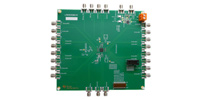
Clocks race to meet demands of modern electronic systems
Ask an EE to free associate around the term 'timing solution' and the answer, more than likely, is going to be 'the 555 timer IC.' And no wonder; invented more than 40 years, it is still being produced - in fact it is the largest selling IC ever - with slight variations, by a number of semiconductor manufacturers. The '555' is ubiquitous, found as a timing solution in everything from toys to spacecraft.
But the needs of modern end applications are imposing new demands on clocks and timing solutions. Most systems operate synchronously; voltage levels must rise or fall at a specified time or else the circuit will be out of sync and failures will occur. The 'timing budget' - the tolerable deviation from specified before failure occurs - sets the ultimate limit on the maximum rate at which a system can operate.
In wireless communications systems, clock jitter - the deviations of clock edges from their ideal locations - and local oscillator (LO) phase noise need to be minimized to prevent degradation of the RF signal quality. Clock jitter is also a major bottleneck for maintaining signal integrity in high data rate networking and wired communication. In advanced driver assist systems (ADAS), high-performance phase locked loops (PLLs) can significantly enhance the range and accuracy of radar systems.
The fact is that the performance of a system at any level, on a chip, on a board, or across boards, is predicated on the coordination of clock signals among the components. In synchronous systems, timing really is everything.
In a new Texas Instruments brochure, everything is about timing: "Clock and Timing Solutions" presents a range of easy to use solutions, tailored to the needs of specific applications, and thus designed to accelerate time to market.

























